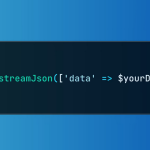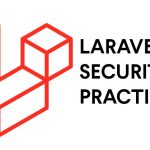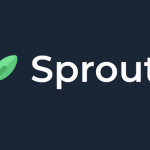1. Keep Laravel Updated
Laravel regularly releases updates to address vulnerabilities and improve features. Running outdated versions can expose your application to known security exploits. Use Composer to check for and install updates:
composer updateAlso, subscribe to Laravel security advisories to stay informed about critical patches.
2. Environment Configuration
Use .env for Configuration
The .env file centralizes sensitive data like database credentials and API keys, ensuring it is not directly embedded in your codebase. Never commit this file to version control (e.g., Git); instead, use .env.example for others to configure their local environments.
Set APP_DEBUG to false
In production, debugging mode (APP_DEBUG=true) can expose stack traces and sensitive data, such as database credentials. Ensure this is disabled in .env:
APP_DEBUG=false3. Database Security
Avoid SQL Injection
Eloquent ORM and Query Builder handle parameter binding automatically, protecting against SQL injection.
Example of unsafe query:
DB::select("SELECT * FROM users WHERE email = '$email'");Safe approach:
DB::select('SELECT * FROM users WHERE email = ?', [$email]);Use Database Users with Limited Privileges
Grant database users only the privileges they need. For example, the application user should not have the ability to DROP tables.
4. Sanitize and Validate Inputs
Laravel’s validation rules make it easy to enforce constraints on input data, reducing the risk of malicious input being processed.
Example:
$request->validate([
'email' => 'required|email',
'password' => 'required|min:8',
]);Use the sanitize() helper (if added) or custom middleware to strip unwanted tags or characters.
5. Protect Against Cross-Site Scripting (XSS)
XSS attacks involve injecting malicious scripts into web pages. To prevent this:
Escape Output
Laravel automatically escapes output when using {{ }}. Use {!! !!} only for trusted content.
Example of escaping:
{{ $userInput }}Laravel’s e() Helper
Use the e() helper to manually escape strings when needed.
Example:
echo e('<script>alert("XSS")</script>'); // Output: <script>alert("XSS")</script>6. Cross-Site Request Forgery (CSRF) Protection
CSRF attacks trick users into submitting unauthorized requests. Laravel provides automatic protection by including a CSRF token in forms.
Steps to Implement:
- Use the
@csrfBlade directive:
<form method="POST">
@csrf
<input type="text" name="data">
</form>- For AJAX requests, include the token in the request headers.
Example:
$.ajaxSetup({
headers: {
'X-CSRF-TOKEN': $('meta[name="csrf-token"]').attr('content')
}
});7. Secure Authentication
Laravel’s authentication guards and features simplify building secure login systems. Additionally:
Enforce Strong Passwords
Ensure passwords meet complexity requirements by using regex in validation rules.
Two-Factor Authentication (2FA)
Integrate 2FA to add an extra layer of security. Laravel Fortify offers built-in support for 2FA.
8. Encrypt Sensitive Data
Laravel’s encryption system secures sensitive data stored in the database. Use the Crypt facade to encrypt/decrypt strings.
Example:
use Illuminate\Support\Facades\Crypt;
$encrypted = Crypt::encryptString('Sensitive Information');
$decrypted = Crypt::decryptString($encrypted);This ensures that even if the database is compromised, sensitive data remains unreadable.
9. Use HTTPS
HTTPS ensures data transmitted between the client and server is encrypted. To enforce HTTPS:
- Configure your server to redirect HTTP traffic to HTTPS.
- Update the
APP_URLin.env:
APP_URL=https://yourdomain.comUse middleware like \App\Http\Middleware\HttpsProtocol to force HTTPS connections.
10. Set Proper Permissions
Incorrect file permissions can allow attackers to read sensitive files or upload malicious scripts.
Recommended Permissions:
- Directories:
755 - Files:
644
Ensure storage and bootstrap/cache directories are writable:
chmod -R 775 storage bootstrap/cache11. Rate Limiting
To prevent abuse (e.g., brute force login attempts), implement rate limiting using Laravel’s ThrottleRequests middleware.
Example:
Route::middleware('throttle:10,1')->post('/login', [AuthController::class, 'login']);This limits requests to 10 per minute.
12. Monitor and Log Activity
Configure logging in .env to track errors and suspicious activities:
LOG_CHANNEL=dailyUse tools like Laravel Telescope for advanced monitoring of requests, jobs, and errors.
13. Secure Third-party Packages
Before installing a package:
- Check its download stats and reviews.
- Ensure it is actively maintained.
- Review the code for potential vulnerabilities.
Keep packages updated with:
composer update14. Disable Directory Browsing
Directory browsing exposes sensitive files to attackers. To disable it, configure your web server:
- Apache: Add
Options -Indexesin.htaccess. - Nginx: Set
autoindex off;in the server block.
15. Content Security Policy (CSP)
A CSP header restricts the sources from which your application can load content, preventing XSS attacks. Use Laravel middleware to set CSP headers.
Example:
header("Content-Security-Policy: default-src 'self'; img-src 'self' https://trusted.com;");By thoroughly implementing these practices, you can significantly enhance the security of your Laravel applications. Remember, security is an ongoing process—stay vigilant and regularly audit your application for vulnerabilities.
If you’re looking for top-notch freelance Laravel development services, look no further! With over 8 years of experience in building secure, scalable, and high-performance Laravel applications, I offer tailored solutions to meet your specific business needs. Whether you need custom web development, API integration, or system optimization, I am committed to delivering quality results that drive success. Get in touch with me today to discuss your project, and let’s turn your ideas into reality with Laravel!






